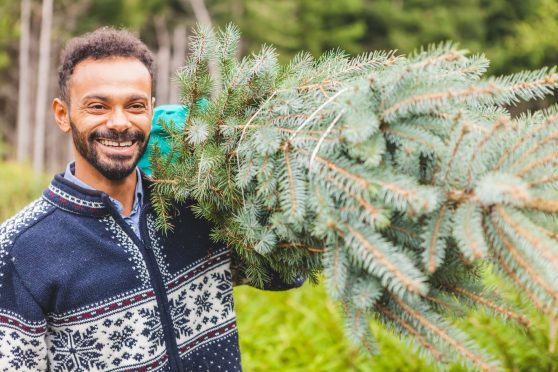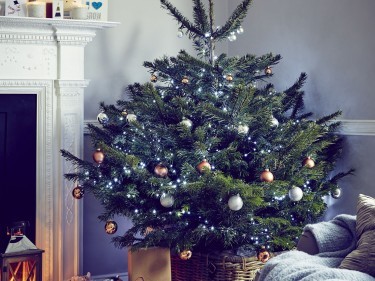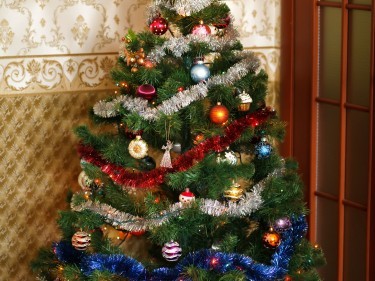Thinking of buying a real Christmas tree? Expert David Mitchell offers top tips for choosing the right one and keeping it looking fresh throughout the festive season
If you’re trawling garden centres and nurseries looking for a real Christmas tree, there are certain things you have to bear in mind.
Size matters – it’s no use trying to fit a wide, dense tree into a narrow space or hoping that a thinner tree will fill a huge space.
from higher end retailers. If you’re worried about the carbon footprint and imported trees, you may be better off going to members of the British Christmas Tree Growers’ Association (www.bctga.co.uk) for a tree grown in the UK.
“The Nordman Fir is our most popular tree and is much more needle-fast with attractive dark colouration,” says David Mitchell, plant buyer for Wvevale Garden Centres. “Those looking for something more exclusive and unusual may go for the Fraser and Noble firs which have an almost conical shape, tasteful blue or olive green colours and both with very dense, highly scented foliage.”
There’s been a trend towards ‘Swedish-style’ trees that have a much more open structure where you can visibly see the layers and lay decorations right into the centre.
“This does come in at a lower price point but is by no means a lower-quality tree – it follows the trend for a more modern Christmas tree that suits minimalistic and contemporary spaces and modern decoration themes,” says Mitchell.
The traditional Norway spruce is less popular but is cheaper, smells good and represents the classic idea of a Christmas tree from childhood. The blue spruce is all about the colour and is ideal as a pot-grown tree, to be kept after the festivities.
Mitchell offers the following top tips for choosing and looking after your tree:
Choose a tree that isn’t pre-wrapped in netting so you can really see the shape and the branches won’t permanently be stuck upright. Plus, if trees are left in the net, air is not able to circulate, the tree warms up and a micro-climate forms. This leads to the tree beginning to decompose and needles will drop at a much quicker rate.
The colour of the needles should be dark green, not pale and washed out, and needles should feel waxy to the touch and not dry. Try stroking the tree and seeing if needles come off.
Some people prefer a full dense tree, others opt for a more open shape but in general, the tree should be evenly proportioned, not too dense at the bottom or sparse at the top or have gaping holes. Make sure you look around the whole tree for these.
The top of the tree is important. Look for a straight leader (the long, tall part of the tree, right at the top).
When first brought home, keep your tree fresh for longer by chopping a few centimetres off the bottom and soaking it in a bucket of water outside at least overnight, but for as long as possible before bringing indoors.
Keep the tree away from draughts and direct heat and ideally use LED lights, which emit less heat and are better for the environment.
Don’t wait until the last minute to purchase. Christmas trees are cut at broadly the same time in the fields in late October/November so if you buy late, the trees are likely to have been in a stored location for a long period out of water and receiving no care, which may result in them not lasting as long.


